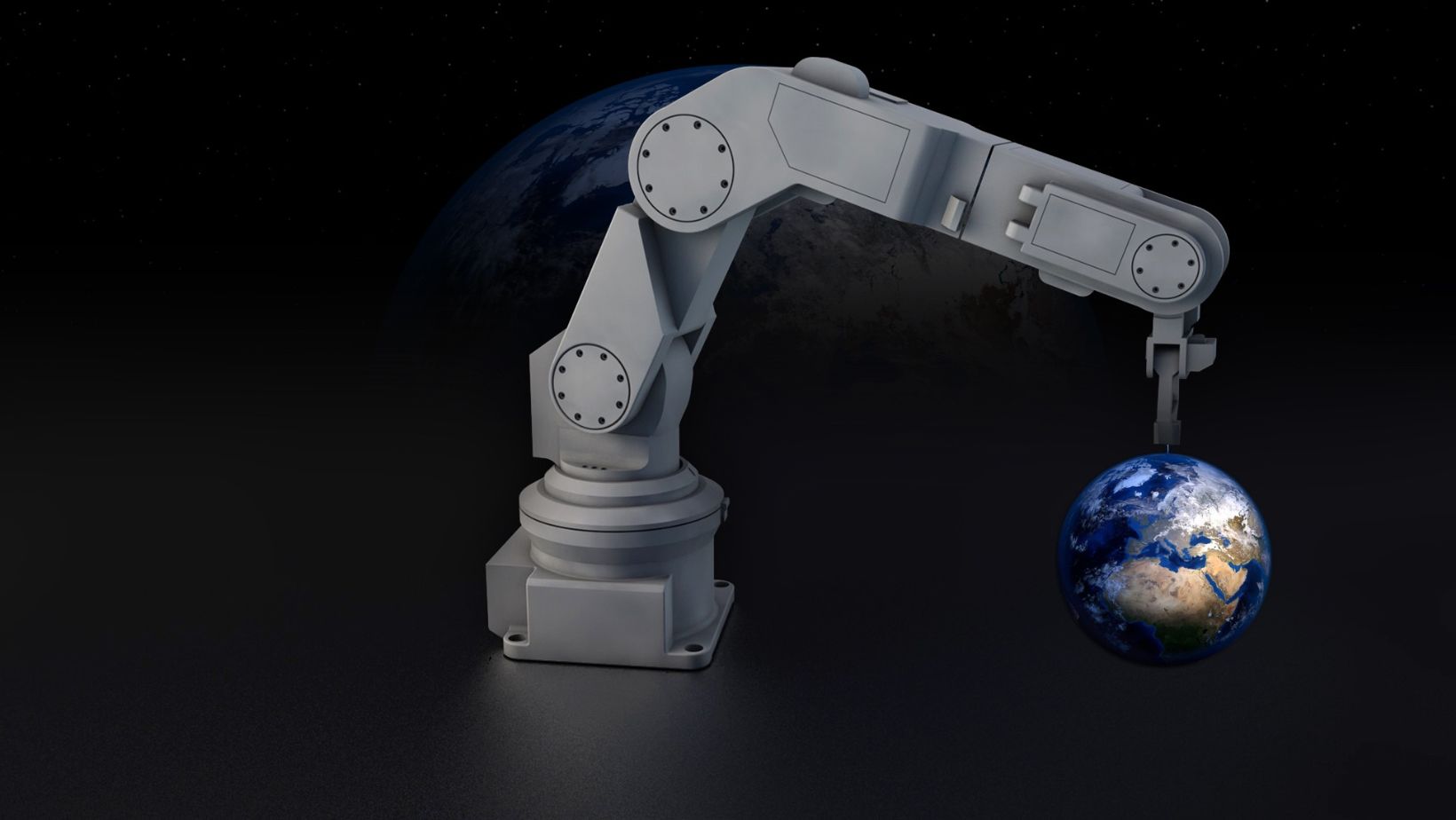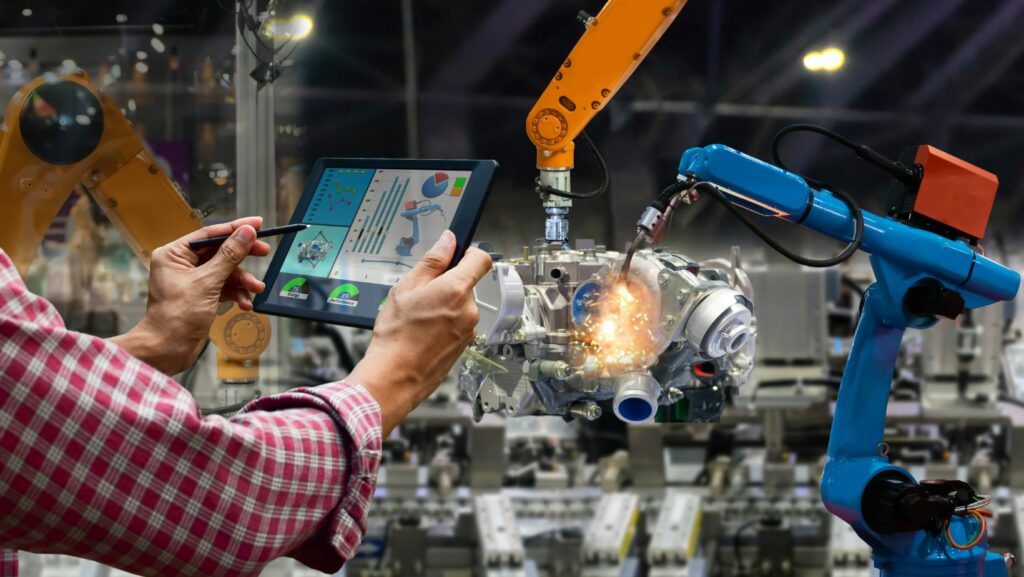Key Takeaways
- Revolutionizing E-commerce: Warehouse robotics is transforming goods storage and distribution, crucial for meeting the demands of a fast-paced e-commerce landscape.
- Types of Robotics: Key technologies include Automated Guided Vehicles (AGVs), robotic arms, mobile robots, and Automated Storage and Retrieval Systems (AS/RS), each enhancing efficiency in different operational aspects.
- Benefits of Automation: Implementing warehouse robotics leads to increased efficiency, cost savings, improved accuracy, scalability, and enhanced workplace safety by reducing manual labor.
- Integration of AI and ML: The incorporation of artificial intelligence and machine learning is elevating warehouse robotics, enabling predictive analytics and real-time inventory management.
- Challenges to Address: Companies face challenges such as system integration, maintenance, and the need for ongoing training while transitioning to robotic systems.
- Future Improvements: The rise of collaborative robots (cobots) and advancements in navigation technology signify a promising future for warehouse robotics, facilitating seamless operations and collaborative work environments.
In today’s fast-paced e-commerce landscape, warehouse robotics is revolutionizing the way goods are stored and distributed. These advanced machines are not just enhancing efficiency; they’re transforming entire supply chains. As businesses strive to meet growing consumer demands, the integration of robotics in warehouses has become a game changer.
From automated picking systems to self-navigating vehicles, warehouse robotics is streamlining operations and reducing labor costs. Companies are increasingly turning to these technologies to optimize inventory management and improve accuracy. With the rise of artificial intelligence and machine learning, the future of warehouse robotics looks promising, offering endless possibilities for innovation and growth.
Warehouse Robotics
Warehouse robotics refer to the use of automated systems and machines in storage and distribution centers to improve efficiency and accuracy. These technologies encompass a range of equipment, including automated guided vehicles (AGVs), robotic arms, and sortation systems designed for high-speed sorting and order fulfillment.
Types of Warehouse Robotics
- Automated Guided Vehicles (AGVs):
AGVs navigate through the warehouse autonomously, transporting goods between locations without human intervention.
- Robotic Arms:
Robotic arms handle tasks like picking, packing, and palletizing products, effectively reducing manual labor requirements.
- Mobile Robots:
Mobile robots assist in tasks such as inventory management and restocking. They utilize sensors and cameras to navigate surroundings.
- Automated Storage and Retrieval Systems (AS/RS):
AS/RS manage inventory storage and retrieval efficiently, optimizing space and improving retrieval times.
Benefits of Warehouse Robotics
- Increased Efficiency:
Robotics enhance operational speed and accuracy, significantly reducing time spent on manual labor.
- Cost Reduction:
Automation lowers labor costs by minimizing the need for manual workers and increasing the throughput of goods.
- Enhanced Accuracy:
Robotics systems exhibit high precision in tasks such as picking, leading to fewer errors and improved inventory management.
- Scalability:
Automated systems offer flexibility to adapt to changing demands, making it easier to scale operations rapidly.
- Safety Improvements:
Robotics reduce the risk of workplace injuries by taking on hazardous tasks, thereby creating a safer work environment.
- Integration of AI and ML:
Artificial intelligence and machine learning technologies are being integrated into robotic systems to enhance decision-making and predictive analytics.
- Collaborative Robots (Cobots):
Cobots are designed to work alongside human workers, assisting them rather than replacing them.
- Advanced Navigation Technologies:
Development in navigation systems, such as LiDAR and advanced sensors, improves the efficiency and safety of robotic movements.
- Sustainability Initiatives:
Warehouse robotics increasingly focus on sustainable practices, including energy-efficient operations and reduced waste.
Warehouse robotics are revolutionizing the way products are stored, retrieved, and distributed within various industries, streamlining processes to meet the evolving demands of modern commerce.
Types Of Warehouse Robotics

Warehouse robotics encompasses various technologies, each designed to enhance operational efficiency and accuracy in storage and distribution centers. The primary types include Automated Guided Vehicles (AGVs), robotic arms, mobile robots, and Automated Storage and Retrieval Systems (AS/RS).
Automated Guided Vehicles
Automated Guided Vehicles (AGVs) are mobile robots designed to transport materials across the warehouse floor. AGVs follow predefined paths, using sensors and mapping technology to navigate the environment. They facilitate the movement of goods from one location to another without human intervention. AGVs significantly reduce labor costs and minimize the risks of workplace injuries by automating transport tasks. Notably, AGVs can work alongside other warehouse robotics, enhancing overall operational efficiency.
Robotic Arms
Robotic arms play a critical role in warehouse automation, specializing in tasks such as picking, packing, and sorting items. These programmable machines excel at repetitive tasks with high precision. Equipped with advanced sensors and cameras, robotic arms can identify, grasp, and place items accurately. Their versatility allows them to handle a wide range of products, from small boxes to heavy pallets. By integrating robotic arms into the workflow, warehouses achieve significant improvements in speed and accuracy, leading to streamlined operations and reduced product damage.
Benefits Of Implementing Warehouse Robotics
Warehouse robotics deliver numerous advantages that significantly enhance operations, enabling companies to adapt to increasing demands effectively.
Increased Efficiency
Warehouse robotics streamline operations by automating repetitive tasks. Automated picking systems reduce human error, which boosts order accuracy. Mobile robots transport goods rapidly across the warehouse floor. This automation minimizes downtime, resulting in faster turnaround times. The integration of robotics allows for simultaneous handling of multiple tasks, increasing overall productivity.
Cost Savings
Implementing warehouse robotics leads to substantial cost reductions. Labor costs decrease as robotic systems manage tasks traditionally performed by employees. Companies experience lower operational costs due to enhanced efficiency and reduced error rates, leading to less waste. Furthermore, improved inventory management driven by robotics allows for better resource allocation, resulting in decreased overhead expenses.
Improved Safety
Warehouse robotics enhance safety by minimizing the risk of workplace injuries. Automated systems handle heavy lifting and repetitive tasks, reducing physical strain on human workers. Robotics operate under strict safety protocols, ensuring hazardous tasks are managed effectively. The presence of these advanced machines creates a safer working environment, allowing human employees to focus on higher-value activities.
Challenges In Warehouse Robotics
Warehouse robotics face several challenges that can impact efficiency and performance in operations. Understanding these challenges is essential for effective implementation and management of robotic systems.
Integration With Existing Systems
Integrating warehouse robotics with existing systems poses a significant challenge. Legacy systems may not be compatible with newer technologies, requiring substantial modifications. Manual data entry processes can lead to errors, hindering seamless communication between devices. Moreover, ensuring real-time data synchronization across multiple platforms demands advanced middleware solutions. Transitioning to automated systems entails retraining employees to use new technology, potentially disrupting workflow during the adaptation period.
Maintenance And Reliability
Maintenance and reliability of warehouse robotics present ongoing concerns for operators. Regular maintenance is critical to prevent costly breakdowns, which can disrupt operations. Lack of standardized maintenance practices can lead to inconsistent performance across different types of robots. Remote monitoring technologies may help predict failures, but they require robust infrastructure and ongoing support. Reliability of robotic systems can be affected by environmental conditions, such as temperature and humidity, which may reduce operation efficiency over time. Regular software updates are necessary to enhance functionality, but may require downtime for the robots.
Future Trends In Warehouse Robotics

Warehouse robotics is evolving rapidly, driven by technological advancements that enhance efficiency and operational capabilities. Key trends include the integration of artificial intelligence and collaborative robotics, transforming warehouse environments to meet modern demands.
Advances In AI And Machine Learning
Advancements in artificial intelligence and machine learning significantly enhance warehouse robotics. AI algorithms facilitate predictive analytics, enabling systems to forecast inventory needs and optimize storage space. Machine learning enhances robotic systems, allowing them to adapt to changing environments and improve performance over time. For example, autonomous mobile robots (AMRs) use computer vision and deep learning to navigate complex warehouse layouts, reducing downtime and improving accuracy. These technologies streamline inventory management, enabling real-time tracking of products as they move through the supply chain.
Collaborative Robots
Collaborative robots, or cobots, are increasingly prevalent in warehouses, working alongside human employees to enhance productivity. Cobots are designed with safety features, allowing them to operate within proximity to humans without safety cages or barriers. They assist in repetitive tasks such as sorting, packing, and item retrieval, freeing employees to focus on more complex responsibilities. The rise of cobots improves workforce efficiency and fosters a productive environment where humans and machines collaborate effectively. As businesses strive for higher adaptability in their operations, the integration of cobots becomes pivotal for achieving seamless workflows and improved employee satisfaction.
E-commerce and Tech
Warehouse robotics are reshaping the landscape of the e-commerce industry. Their ability to enhance efficiency and accuracy positions them as essential tools in modern supply chains. As technology continues to evolve, the integration of AI and machine learning will further drive innovation in this field.
The benefits of adopting warehouse robotics extend beyond cost savings and operational efficiency. They also promote safer working environments by reducing the risk of workplace injuries. With ongoing advancements and a focus on collaboration between humans and machines, the future of warehouse robotics looks promising.
Businesses that invest in these technologies will likely gain a competitive edge in meeting the ever-increasing demands of consumers. Embracing warehouse robotics is not just a trend; it’s a strategic move toward a more efficient and sustainable future in logistics.

